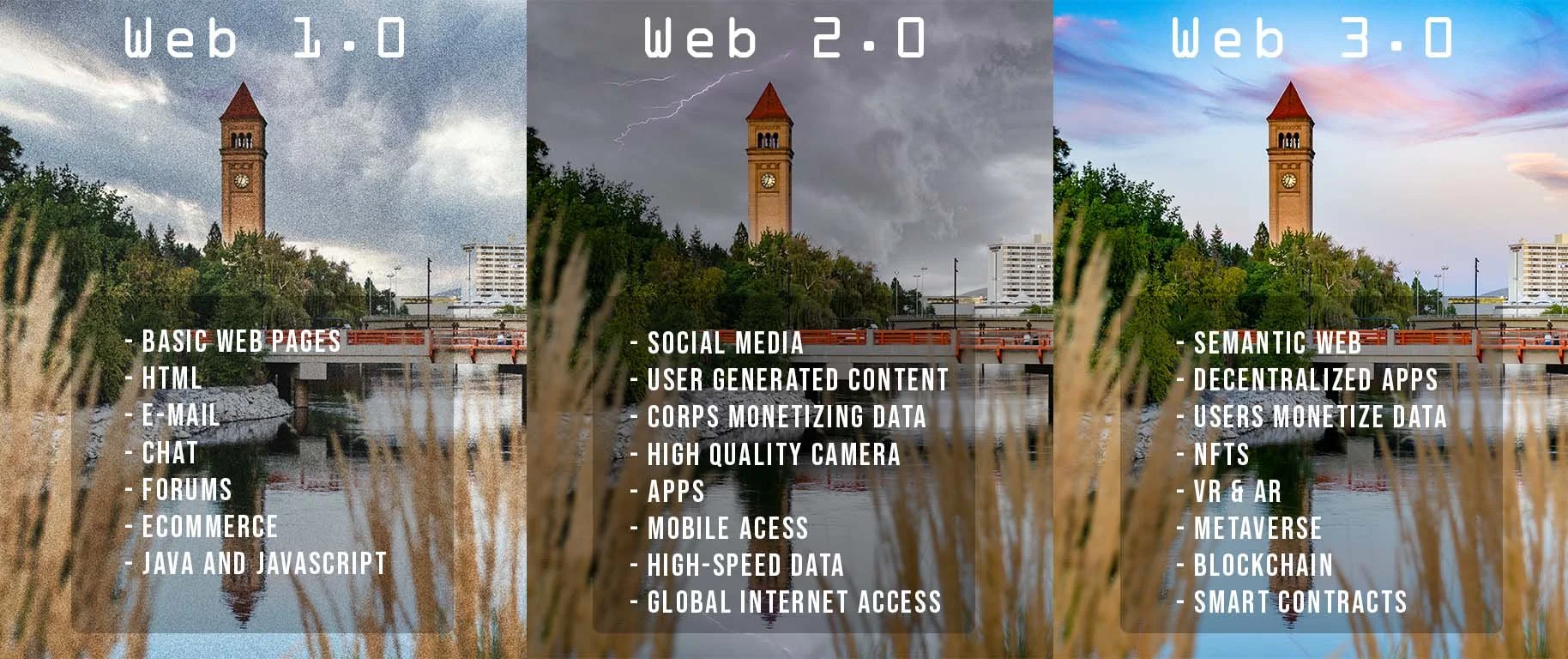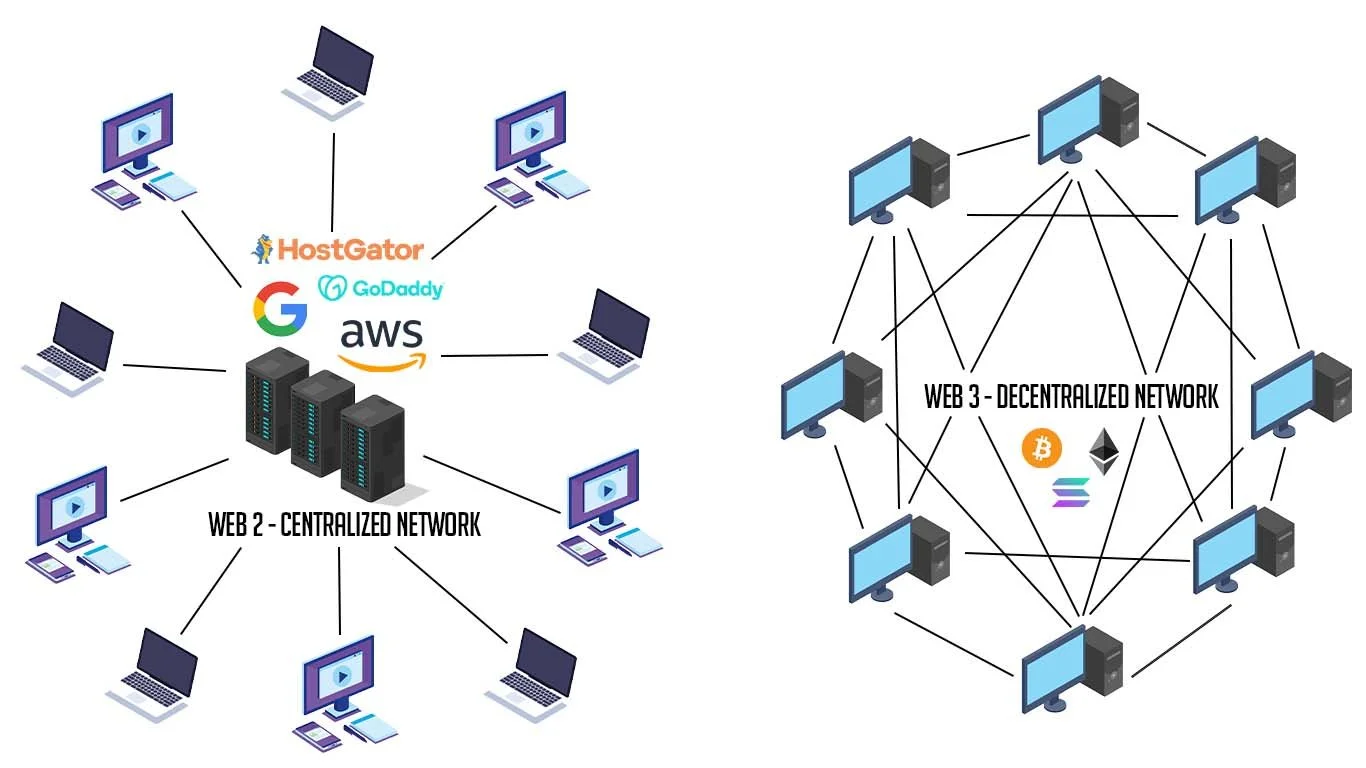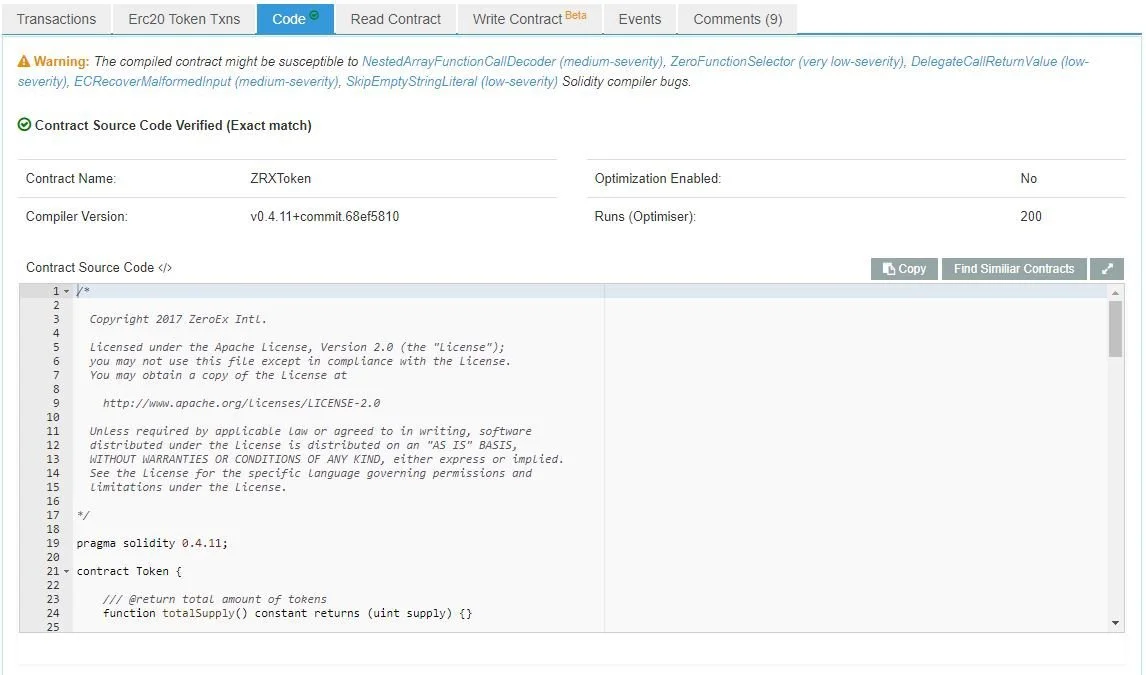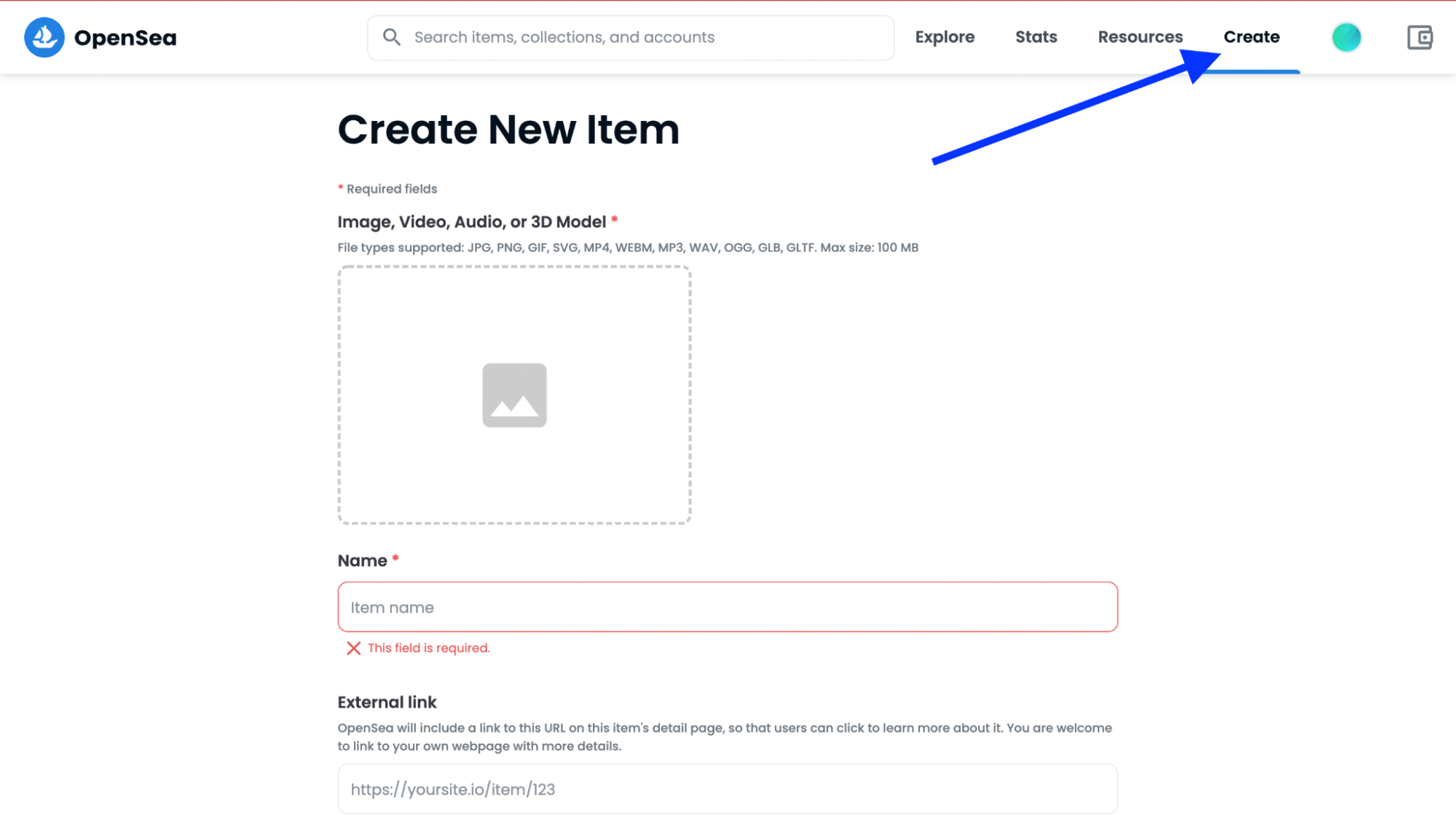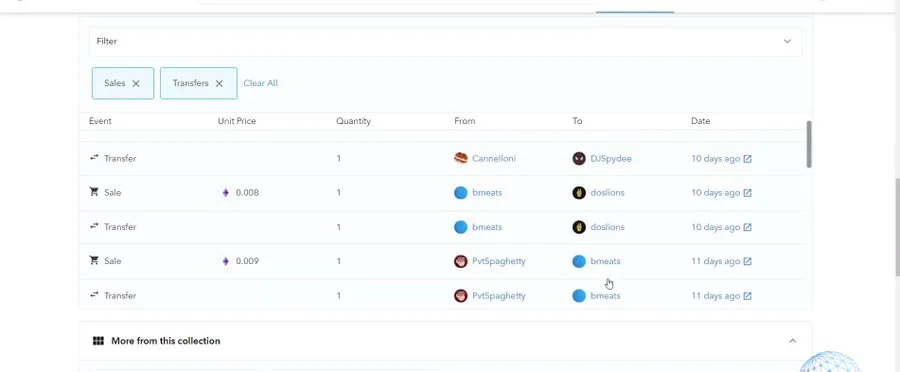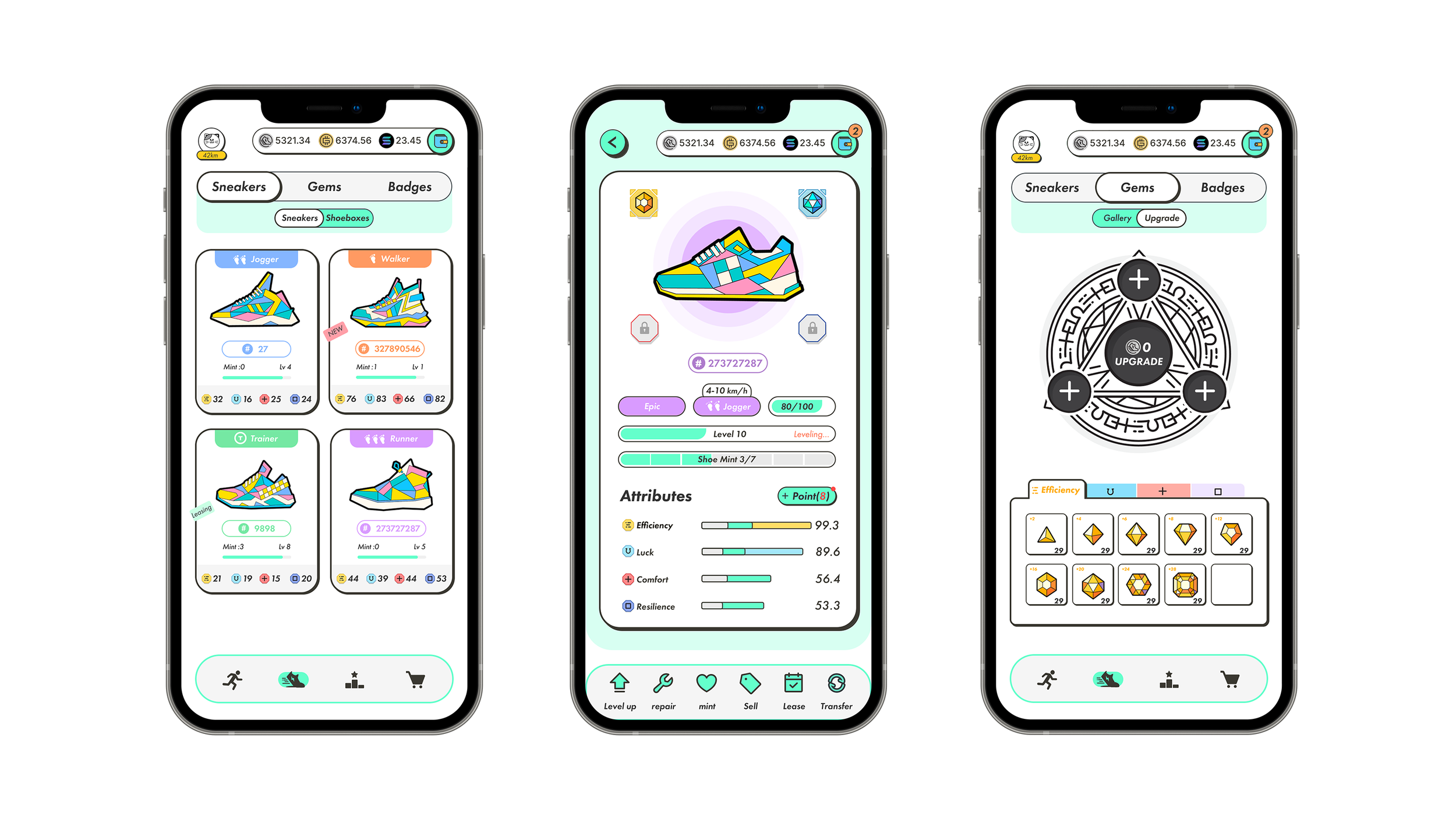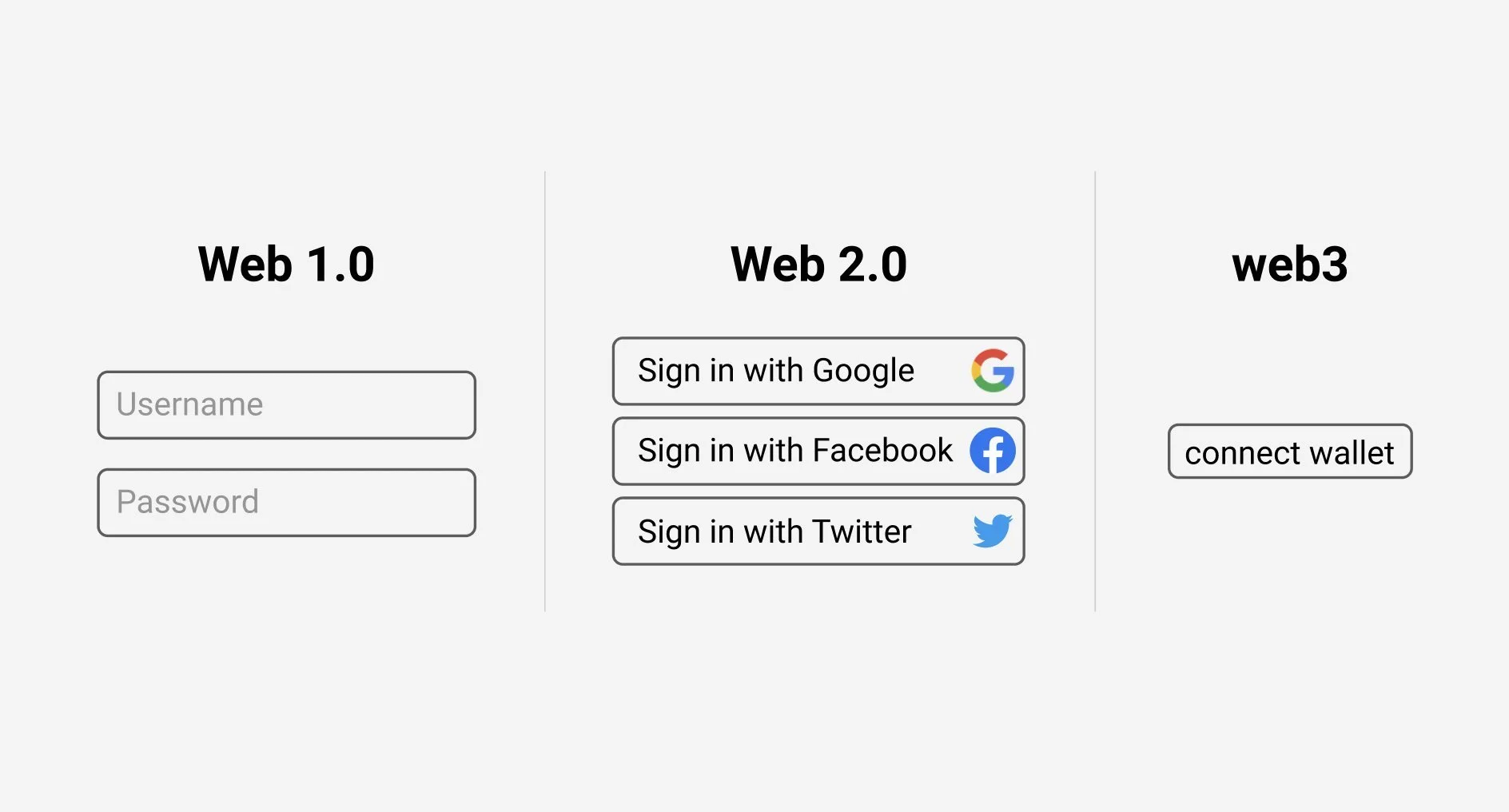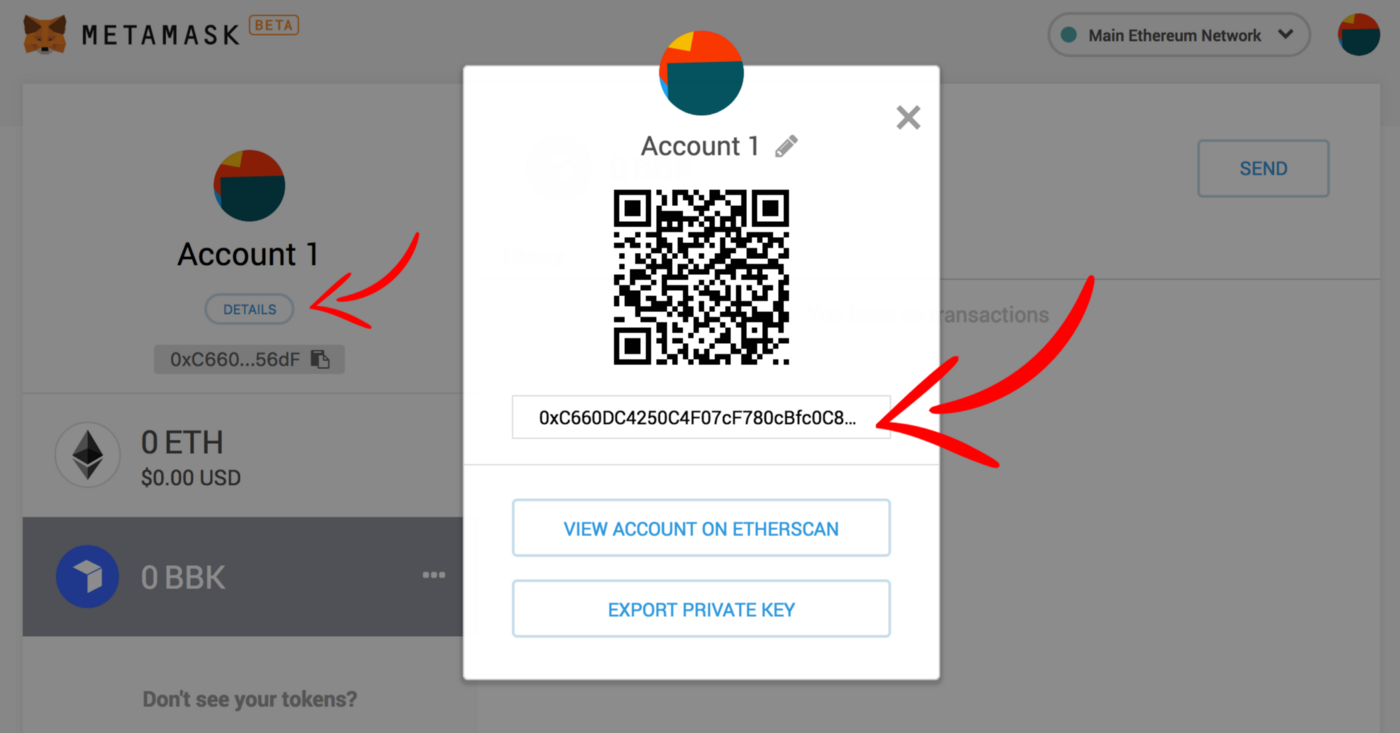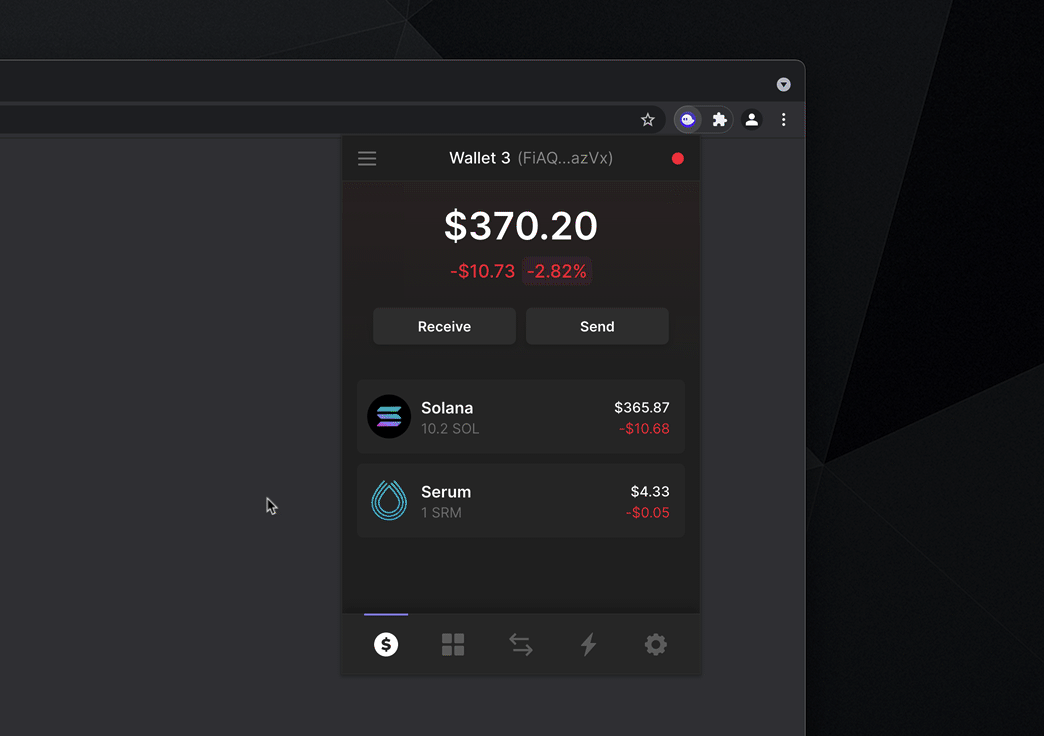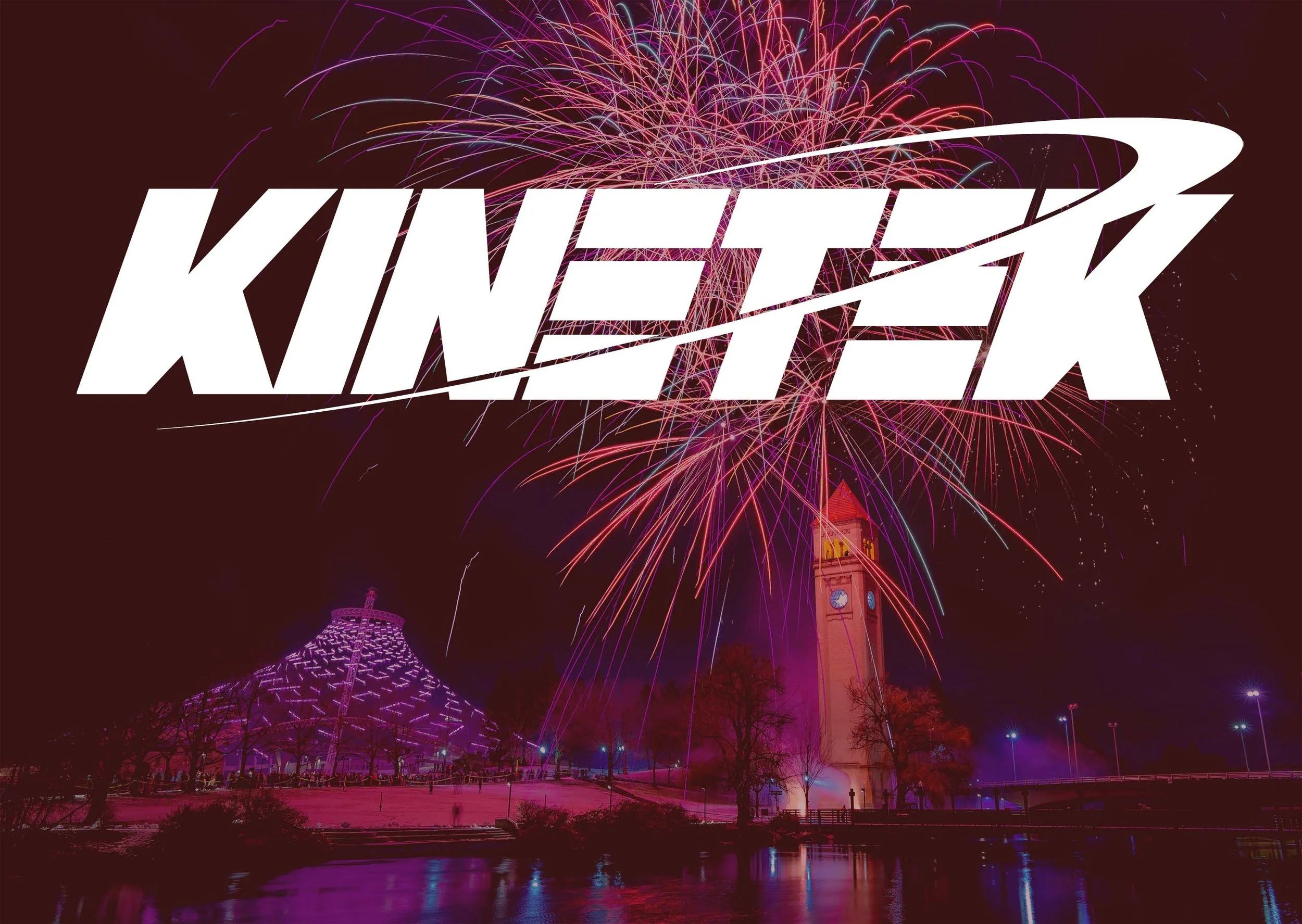Introduction to Web3; Spokane's future on the Blockchain
What is Web 3.0 ?
Web3 the next generation of the World Wide Web, based on blockchain technology. This concept focuses on removing power from big tech companies and focuses on decentralized computing. The contrast is the age we currently live in, known as Web 2.0, where our information is kept and stored on servers, owned by a group of companies referred to as “Big Tech.” It is widely known the hazards of algorithm based AI and it’s influence on the delicate fabric of society, so many are embracing a new improved Web 3.0 for the future.
The current Web2 model includes a myriad of pitfalls that were engineered by capitalism, misinformation, artificial intelligence, and rapidly evolving technology. Web2’s functionality is built heavily from the financial backbone of eCommerce and social media. As it currently stands, the basic model in Web2 forces any user to “pay the middle man” in order to utilize any service. Looking to sell an item? Pay a fee % to Amazon. Looking to transfer money? Pay a fee % to Venmo. Looking to book a flight? Pay a fee % to Orbitz. This is because these services are centralized and owned by “Big Tech” companies. These big tech companies also have a heavy hand in social media algorithms that can persuade or dissuade a specific demographic with the turn of a dial.
Web3.0 cuts out this middle man and provides a more intelligent and efficient delivery of service, without fees that are dictated by the network owner. The only cost involved would be the cost to process the transaction on the blockchain. Imagine you want to book a flight, rent a car, get a hotel room, and plan a trip full of excursions. Rather than spending hours upon hours of researching and comparing rates, Web3.0 would simply deliver to you the best available rates based on your list of requirements. Because there is no middle-man trying to market and coerce you into purchasing things you didn’t ask for, it delivers the best possible product instantaneously.
What is Blockchain?
The blockchain, simply put, is a digital ledger of all transactions across a peer-to-peer network. This data is stored in “blocks” that are chained together chronology, and typically have complete transparency to the public. While the inter workings blockchain technology are vast and ever rapidly expanding, blockchain should be viewed as nothing more than a new type of software. A network of computers across the world, processing transactions as a collective whole, rather than the data being owned by a centralized server. This software is the backbone to the Web3.0 infrastructure, which facilitates cryptocurrency, smart contracts, supply chain, decentralized financing, and most recently, decentralized gaming.
Adoption of blockchain technology has been slow in some sectors, as is most new technology that is unfamiliar to society. Remember when text messaging came out? Your disgruntled uncle probably refuted; “why would I text someone when I could just call them, that’s stupid.” Remember when Apps came out? We all joked about “is there an app for that,” and now apps literally run every facet of our life. Web1.0, E-Mail, MP3s, Napster, MySpace, TikTok.. all considered “fads” that ultimately revolutionized humanity as we know it. Add Blockchain to that list. If you don’t believe me, you should understand that world’s top executives and developers have all left their high-paying jobs at “big tech” to work on Web3.0, for the greater good of humanity, not money.
This model shows how web2 data is owned and regulated by “big tech,” while decentralized network’s redundency provides security, stability, and puts ownership in the hands of the users.
What is Cryptocurrency?
Cryptocurrency is a digital currency or used as a medium of exchange through the blockchain network. Cryptocurrency does not rely on any central authority, government or bank to uphold or maintain it. There are several different cryptocurrencies working on different blockchains, each with their own respective “coin.” For example, the Ethereum coin powers the Ethereum network, while the Solana coin powers the Solana network, and so on. Whenever a transaction is processed on a blockchain network, it utilizes a small portion of it’s proprietary cryptocurrency, known as the “gas”. This is tantamount to paying a fee to a middle-man, however the middle-man is an anonymous volunteer processing the transaction on the network. This middle-man is actually known as a “miner” - any computer on the network that is willing to process that transaction in exchange for a small percentage of cryptocurrency.
“Bitcoin Mining” is a term that many are familiar with, and often comes with negative connotations due to environmental concerns. The blockchain relies on volunteers (miners) around the world to process transactions, by leaving their computers and processors on 24/7. The energy consumption related to this has created great concern among environmental activists, considering cryptocurrency mining the “wild west.” Many miners set up large scale mining operations in area that offer cheap electricity. The pros and cons of bitcoin mining is an interesting debate, as regulation is inevitable. However, the insidious nature of Big Tech’s ability to bypass and skirt around environmental laws is somewhat laughable in the face of this argument. Blockchain visioneers are actively working on more efficient systems, such as the Proof of Stake protocol that uses a fraction of the energy used in traditional mining.
Google can afford to buy the highest end equipment and bypass environmental laws because they have succesfully monetized their user’s data.
What is Bitcoin?
Bitcoin was the first decentralized digital currency, created in 2009. This encrypted ledger was designed and implemented as a way for people to send money over the internet. The intention was to provide an alternative payment system that would operate free of central control or traditional banking fees. There is a limit supply of 21,000,000 bitcoin that will ever be released into circulation. Unlike traditional Fiat money, which is printed and issued by the government, bitcoin negated much of the pain involved with traditional currency. Fiat money needs an intermediary such as a central bank, which results in international transactions taking several days to process and costing inordinate amounts.
What is Ethereum?
Ethereum is the second most popular cryptocurrency and blockchain network. The ethereum blockchain prevailed as next leading cryptocurrency when massive leaps were taken in standardizing ERC smart contracts, which allowed the creation of the first Non-Fungible Tokens, NFTs. The first ERC-721 smart contract in 2017 resulted in an Ethereum-based game in which you could buy, sell, and breed collectible digital cats, called CryptoKitties. ERC standards have led to many revolutionary steps in blockchain utility, making the ethereum network the busiest blockchain network in existance.
What is a Smart Contract?
A smart contract is a small snippet of code designed to interact with other smart contracts and nodes on the blockchain. Smart contracts are written in a variety of programming languages, and stored on the blockchain with full transparency so they can be inspected to verify its functionality. Smart contracts act as an intermediary between nodes (computers on the network), to verify and automate virtually any kind of exchange, no matter how complex.
Example of a smart contract being inspected and verified.
What is an NFT?
The term “Non-Fungible Token” (NFT) is fancy talk for a digital asset that is unique and can not be modified. It shows proof of authorship, and ownership, while having a digital ledger visible to the public of its recent transaction value. The best real-world example would be taking a collectible baseball card in to have it graded and sealed away in a plastic case, never to be opened again. The process of creating an NFT on the blockchain is called “minting”, similar to when the PSA grades and “mints” a collectible baseball card, or when a treasury “mints” a new coin. In order to mint an NFT, you must pay gas fees on the respective network. An NFT can be any digital medium; JPG, MP3, MP4, metadata, etc.
The price and transaction history of all NFTs are visible to the public, which creates an interesting economic standard in which there is no concealing margins. Show me a sports card store that shows what they paid for each unit and is fully transparent on all their profits. This is a failing business model and would never happen in the real world. This is why NFTs can be considered a digital store of currency, similar to old world physical assets such as gold and silver. Recent advancements in the metadata being written into NFT smart contracts, allows interactions to provide real world utility and residual income models.
The transaction history of an NFT is transparent to the public.
A good example of utility within NFTs is stepn.com, a web3 lifestyle app with gaming and social elements. Players can earn cryptocurrency by walking, jogging, or running outdoors. You must first invest into a digital “NFT Sneaker”, all of which have a different set of attributes. Some sneakers might yield more kickback, while other sneakers may last longer without needing upkeep. Level up and improve your sneakers for more effeciency, or sell your NFT sneaker for huge profits when you’re done maximize it’s usage.
stepn.com is a great example of one of the first play-to-earn NFT based lifestyle apps.
What is a wallet?
A web3 wallet is essentially a digital wallet in which you can store cryptocurrency and NFTs. They come in the form of a browser extension or mobile app. In order to gain access to a web3 website (also known as a dApp, decentralized application) you will need to connect your wallet. Since crypto assets are necessary to interact with most applications, this ensures you would have the means to pay the gas for a transaction. Each wallet has it’s own private encrypted password set by the user, so you can self-authenticate prior to logging into any web3 dApps. For increased security, “hardware wallets” can be kept offline in order to reduce the risk of compromise.
What is MetaMask?
Metamask is the most popular wallet extension and the gateway to the Ethereum ecosystem of dApps. This is a simple browser extension that can be added to Google Chrome or Mozilla Firefox. Users will not be asked any private or personal information, but be given a security phrase that can never be recovered. It’s important to write down your wallet security phrase in an important place, because it can never be retrieved. Each wallet has a unique address that allows users to buy, send, or swap cryptocurrency or tokens.
Example of unique wallet address.
How do I buy cryptocurrency?
You will need to use an exchange service to convert your USD to the particular cryptocurrency of your choosing. The most popular currently are Coinbase and Binance. When you sign up for these (free) services, you can link your bank account so that you can purchase cryptocurrency, while also converting crypto back to USD to be sent back to your bank. This is considered your “trader account”, and it will also be assigned a unique address similar to your wallet address. You will need to buy and convert any cryptocurrency you intend to work with here first, before transfering it to your wallet.
Please understand that certain wallets and exchanges do not work with each and all types of cryptocurrency, nor are they always interchangable. Research your intentions ahead of time before buying or transfering cryptocurrency, to ensure that you don’t accidentally lock up your assets with a faulty transaction. Sending small test amounts is a good way to ensure that you are sending it to a valid address.
What is staking?
Staking is the process of locking up your assets in an exchange for rewards, similar to earning interest. Many crypto wallets allow you to delegate your assets to a node for staking, earning up to 12% APY. This is a good way to make a passive income with your cryptocurrency while holding onto it for the long-term.
What is DeFi?
Decentralised Finance is a term that refers to financial applicables that are accessible through cryptocurrency. Users can lend their funds and earn interest, or borrow money against their holdings. This is the new era of financing, a hybrid between traditional banking loans and kickstarter. This allows early adopters and investors to become part owners in web3 projects or real world business ventures.
What is a DAO?
Decentralized autonomus organizations are becoming one of the most impactful and influental forces in the Web3.0 space. These entities act with no central leadership, and decisions are made from the bottom up, governed by a community organized around a specific set of rules enforced by the blockchain. A DAO works without hierarchical management, allowing a collective of members to essentially own the orgnization.
What does this mean for Spokane?
As government and progressive citys around the world continue to embrace and adopt cryptocurrency, it’s likely that Spokane will be slow to adopt such technologies. NFT galleries are starting to create an uproar in the art scene of major forward thinking metropolis areas. Major brands such as Nike and McDonalds are launching NFT initiatives, while Facebook prepares their metaverse to compete with decentralized VR experiences. The acceptance of cryptocurrency as payment is becoming more prevelant online, and is coming soon to local retailers as an acceptable form of tender.
Spokane brands will need to recognize this shift, and they will need partners in the web3 space to evolve and stay relevant. A new era of marketing will be ushered in, where utility on the blockchain becomes paramount over targeted marketing advertisements. A level of concern should be shared throughout the Spokane community, as embracing web3 could potentially help the city evolve both economically and socially.
Kinetek Media is currently working to build Web3 based applications, as well as create marketing solutions for Spokane based brands in the web3 future. Kinetek Media would like to help facilitate anyone wanting to learn how to create their own NFTs by creating a streamlined onboarding and minting process. If you have any questions about Web3 and how it will effect your Spokane based business, feel free to reach out to Miles Bergsma or anyone at the Kinetek Media team.
